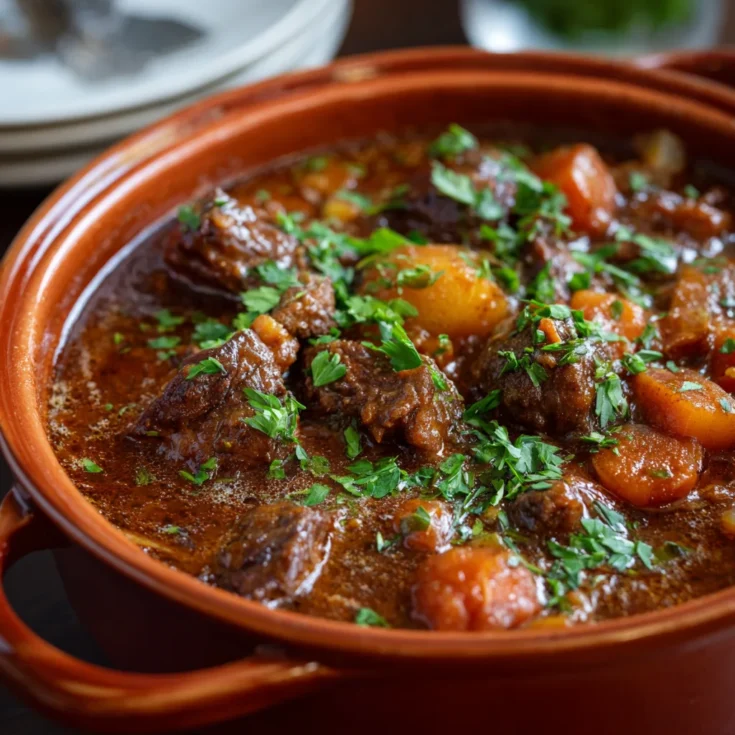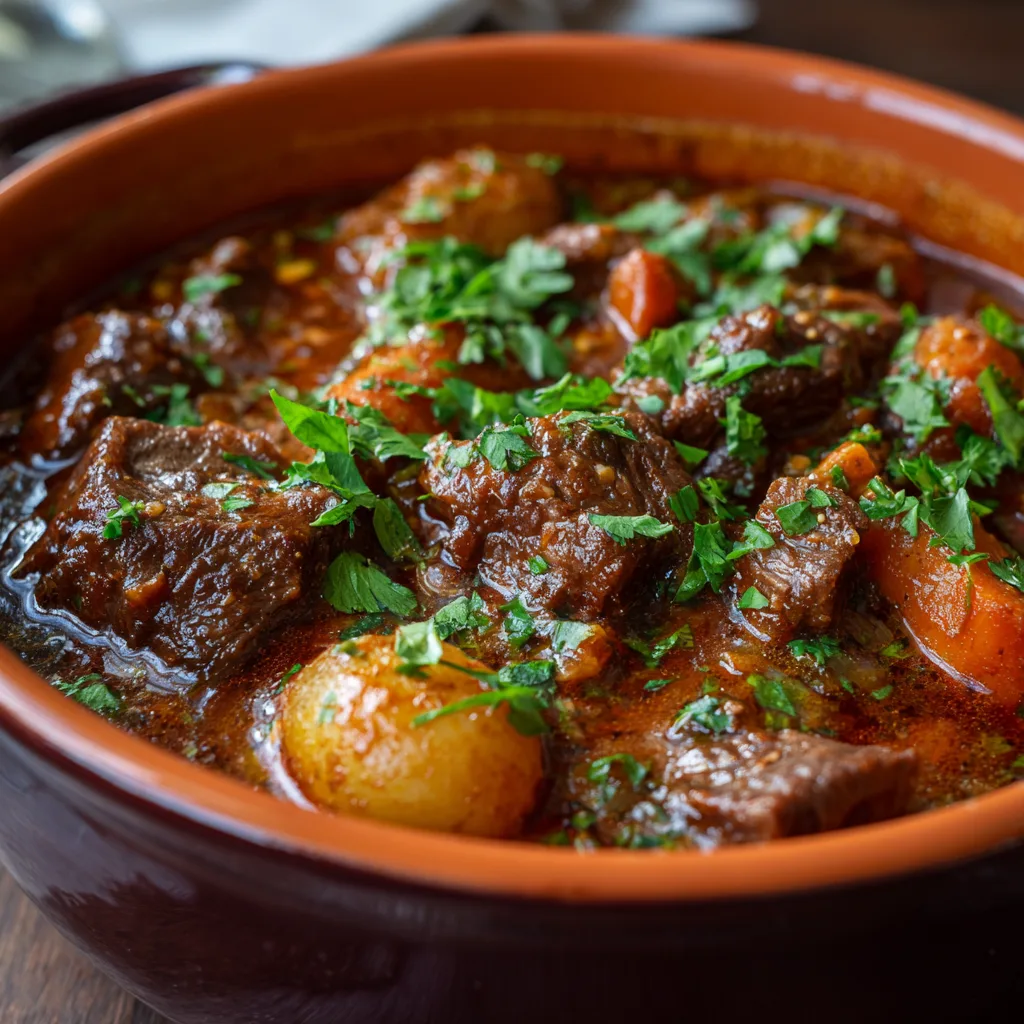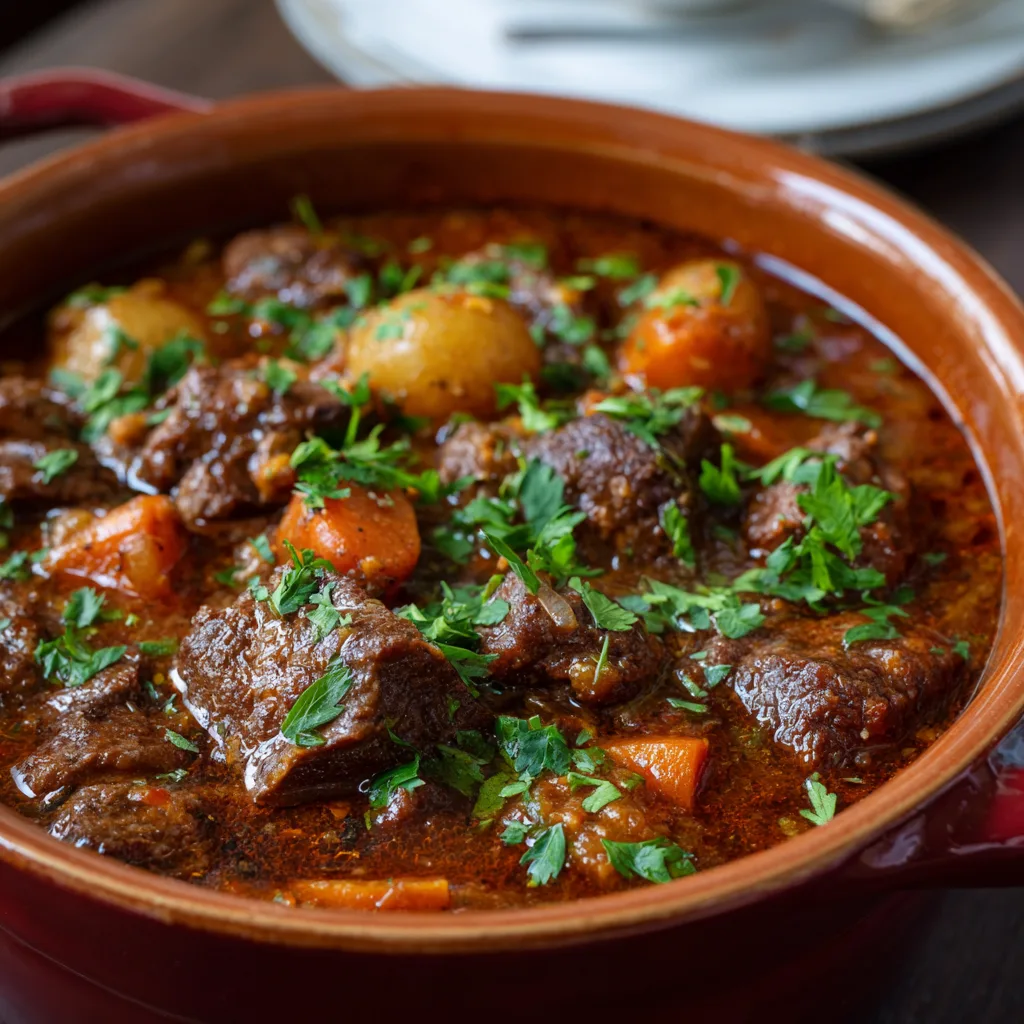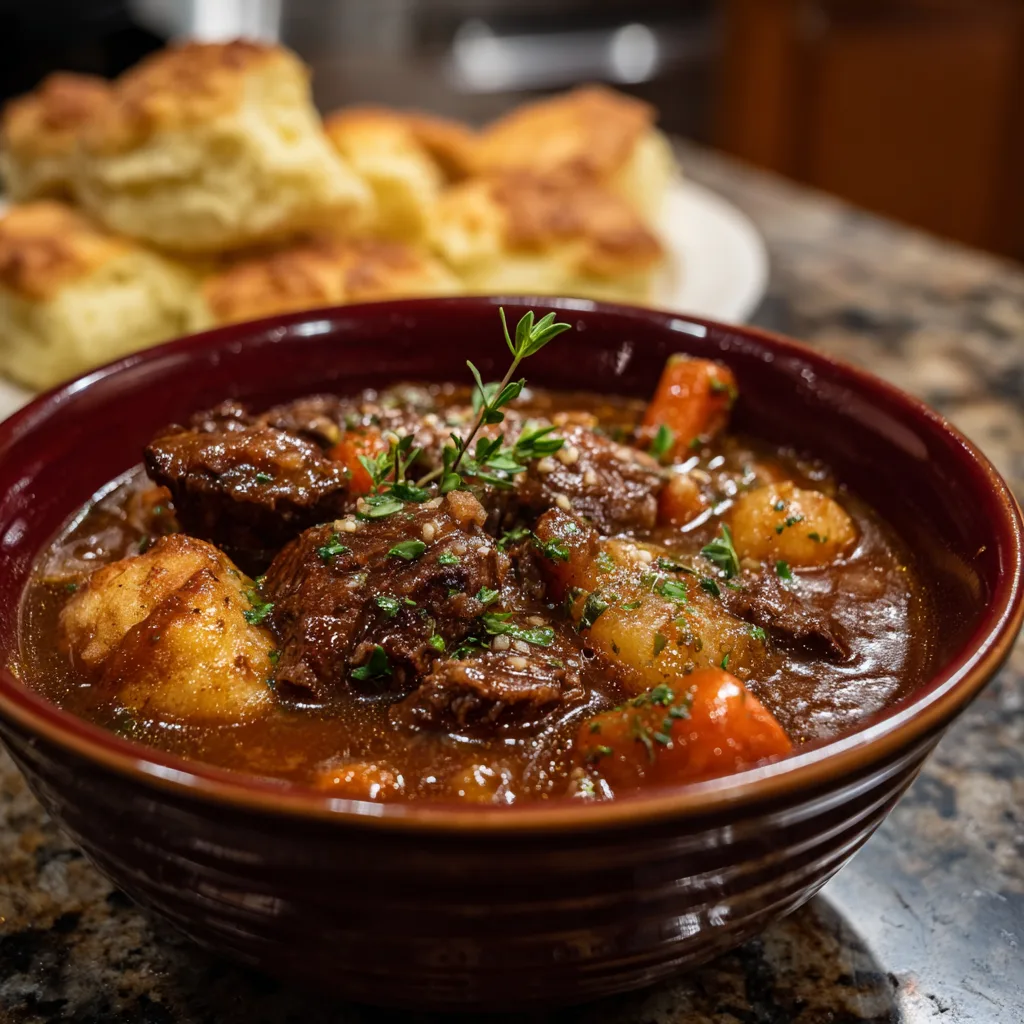Easy Beef Stew: A Hearty, Simple Comfort Food
Beef stew stands as a timeless classic that brings warmth and satisfaction to any table. Its rich aroma and tender chunks of meat paired with hearty vegetables create an irresistible comfort food experience. People crave this dish not only for its flavor but also for the cozy memories it often evokes—perfect for chilly evenings or family gatherings.
Making beef stew easy transforms this traditionally slow-cooked meal into a quick, approachable dish. Minimal prep and commonly found ingredients mean anyone can enjoy this savory delight without hours in the kitchen. Convenience doesn’t compromise taste; instead, it invites more people to experience homemade comfort with less hassle.
Several cooking methods simplify beef stew preparation. The stovetop method allows hands-on control and cooks stew in about an hour. Slow cookers offer a hands-off approach, letting ingredients simmer gently for hours, freeing up time for other tasks. Meanwhile, dump-and-go recipes streamline the process further by combining all ingredients in one pot or slow cooker with little prep. These approaches save time and suit different lifestyles without sacrificing the stew’s hearty essence.
By blending tradition with convenience, easy beef stew fits perfectly into busy modern kitchens while delivering the rich, satisfying flavors that have made this dish a beloved staple.
Fundamentals: Ingredients & Techniques
Choosing the Right Beef Cut for Perfect Stew
Chuck roast remains the top choice for easy beef stew thanks to its rich marbling and abundant connective tissue. These qualities break down during cooking, transforming the meat into tender, flavorful bites. Unlike pre-packaged stew meat, chuck roast offers consistent texture and deeper flavor. Packaged stew meat often comes from leaner cuts, resulting in tougher, drier pieces that lack the luscious mouthfeel true stew lovers expect. Selecting whole chuck roast and cutting it yourself ensures quality control and better results. This approach gives the stew a hearty base, making each spoonful satisfying and rich without extra effort.
Searing & Building Deep Flavor with the Maillard Reaction
Browning the beef is a critical step to develop complex flavors. The Maillard reaction, a chemical process during searing, creates that delicious crust and adds savory depth to the stew. Avoid crowding the pan to ensure proper browning rather than steaming. A pro tip from Kenji López-Alt suggests searing larger steaks whole before cutting into chunks. This method maximizes surface area caramelization and prevents moisture loss from overhandling smaller pieces. Searing also sets the stage for the stew’s rich color and layers of taste that simple boiling can’t achieve.
Vegetables & Liquids: Core Ingredients and Flavor Boosters
Classic stew vegetables include onions, carrots, celery, and potatoes. These staples provide sweetness, texture, and bulk. Onions soften and add aromatic depth, carrots bring subtle sweetness, celery contributes an earthy note, and potatoes offer creamy, tender bites after cooking. When choosing liquids, beef broth or stock serves as the foundation, lending body and savoriness. Interestingly, Serious Eats notes that chicken stock sometimes works better than low-quality beef stock by offering a cleaner taste without overwhelming heaviness. While wine often enriches stew, it’s best avoided here. Instead, focus on layering flavors with broth and herbs to keep the stew simple yet satisfying.
Cooking Methods: Low & Slow Versus Quick & Easy
Traditional low-and-slow cooking, such as oven braising at 284–320°F for 4 to 6 hours, tenderizes beef slowly and melds flavors beautifully. This method requires patience but rewards with melt-in-your-mouth meat. For busy cooks, the dump-and-go approach skips searing and combines ingredients quickly before slow cooking for about 3 hours. It trades some depth for convenience without sacrificing tenderness. Lastly, one-pot stovetop recipes can deliver hearty stew in about an hour, balancing flavor and time efficiency. This versatility means you can enjoy rich beef stew whether you have several hours or just one.
Common Mistakes & Pro Tips for Perfect Beef Stew
Mistakes to Avoid When Making Beef Stew
Choosing the wrong cut of meat can ruin your stew. Lean cuts lack the fat and connective tissue needed to break down into tender, juicy pieces. Without this, the meat turns dry and tough. Avoid over-flouring the beef, as too much flour can create a gummy, unpleasant sauce. When browning, never cook meat and vegetables together. Combining them in one pan prevents proper caramelization and weakens flavor development. Patience matters—insufficient cooking time leaves meat chewy. The beef must reach about 165°F internally and cook long enough to become tender. Lastly, searing small meat pieces causes steaming instead of browning. Always use larger chunks for effective Maillard reaction and richer taste.
Pro Tips for Ultra Tender, Flavorful Beef Stew
Bring beef to room temperature before cooking to avoid thermal shock, which can make meat tough. When adding beef to liquid, ensure the broth simmers gently; boiling breaks down texture and dries meat out. Use a cartouche—a parchment paper lid placed under the pot’s lid—to keep moisture circulating evenly, locking in flavors and tenderness. Layer flavors by starting with an aromatic base of onions, garlic, and herbs. Deglaze the pan to capture browned bits before adding liquids. This technique, inspired by Epicurious’s no-recipe method, builds complexity without complicating the process. These simple adjustments elevate an easy beef stew from good to unforgettable.
Variations & Serving Ideas to Elevate Your Easy Beef Stew
Method Variations for Every Kitchen and Schedule
Slow cookers simplify beef stew preparation by allowing a dump-and-go approach. You can skip searing for convenience, but browning the meat beforehand adds richer flavor. This method suits busy days, delivering tender results with minimal effort. Pressure cookers or Instant Pots speed up stew cooking dramatically. They tenderize meat and meld flavors in under an hour, making them perfect for quick weeknight meals. For those who prefer traditional stovetop cooking, one-hour recipes offer a great balance of flavor and speed. These usually involve searing and simmering in a single pot, like the versions from Feel Good Foodie and An Edible Mosaic™. Finally, the simplest hands-off dump-and-go recipes let you combine ingredients quickly and let the slow cooker do the rest. This flexibility means you can enjoy hearty beef stew regardless of your available time or tools.
Flavor Twists and Add-Ins for Unique Stew Experiences
Add a comforting Irish twist by including butternut squash in your stew. This ingredient enriches the dish with natural sweetness and creaminess while boosting nutrition. Plus, stews with squash freeze and store beautifully for future meals. For a secret flavor boost, try stirring in tomato paste and anchovies. These ingredients create an umami-rich base that deepens the stew’s savory profile without overpowering it. If you want to explore classic French flavors, adapt the recipe toward a beef bourguignon style by incorporating mushrooms, pearl onions, and a bouquet garni of fresh herbs. This version layers complex herbal and earthy notes while maintaining the comforting stew texture. These variations make easy beef stew exciting and adaptable to your personal taste and pantry staples.
Frequently Asked Questions About Easy Beef Stew
What cut of beef is best for beef stew?
Chuck roast is the preferred cut due to its marbling and connective tissue, which break down into tender, flavorful meat during cooking. Avoid pre-cut stew meat from the store, as it often comes from leaner, tougher cuts. Using whole chuck roast and cutting it yourself guarantees better texture and taste.
Do I have to brown the beef before stewing?
Browning the beef adds rich flavor through caramelization, enhancing the stew’s depth. However, a hands-off method without searing is possible and still produces tender meat. Skipping browning saves time but may result in a less complex flavor.
Can I use a slow cooker or Instant Pot for beef stew?
Yes, both slow cookers and Instant Pots are popular tools for making beef stew. Slow cookers allow for easy, low-and-slow cooking, while Instant Pots dramatically reduce cooking time with pressure cooking. Both methods yield tender beef and delicious results.
How do I thicken beef stew properly?
To thicken stew, use a slurry made from flour or cornstarch mixed with cold water. Stir it in during the last 10 minutes of cooking to avoid clumps. Natural thickeners like the starch from potatoes also help create a rich, velvety sauce.
How can I make beef stew healthier?
Choose leaner beef cuts and increase the ratio of vegetables to meat. Reduce added salt and use low-sodium broth. Incorporating more nutrient-dense vegetables, such as butternut squash or leafy greens, boosts vitamins and fiber without compromising flavor.
Easy Beef Stew Recipe – Hearty, Classic & Perfect for Any Night

A brief and enticing description highlighting the stew’s hearty flavors, ease of preparation, and comforting qualities.
Ingredients
- 2 lbs chuck roast, cut into 1-inch chunks
- 3 carrots, peeled and sliced
- 2 celery stalks, chopped
- 1 large onion, diced
- 3 medium potatoes, peeled and cubed
- 4 cups beef broth
- 2 tbsp tomato paste
- 3 cloves garlic, minced
- 2 tbsp olive oil
- 1 tsp dried thyme
- Salt and pepper to taste
Instructions
☐ Heat olive oil in a large pot over medium heat.
☐ Sear beef chunks until browned on all sides; remove and set aside. ☐ Sauté onions, garlic, carrots, and celery until softened.
☐ Return beef to the pot and stir in tomato paste.
☐ Pour in beef broth and add thyme, salt, and pepper. t
☐ Bring to a simmer, cover, and cook for 1 hour.
☐ Add potatoes and cook uncovered for another 30 minutes until tender.
☐ Adjust seasoning and serve hot.
Notes
- For a thicker stew, mix 1 tbsp cornstarch with 2 tbsp cold water and stir in during last 10 minutes.- Store leftovers in airtight container in refrigerator for up to 3 days.- Freeze portions for up to 3 months.- Flavors improve when reheated gently on stovetop or microwave.- Add butternut squash or mushrooms for variation.




